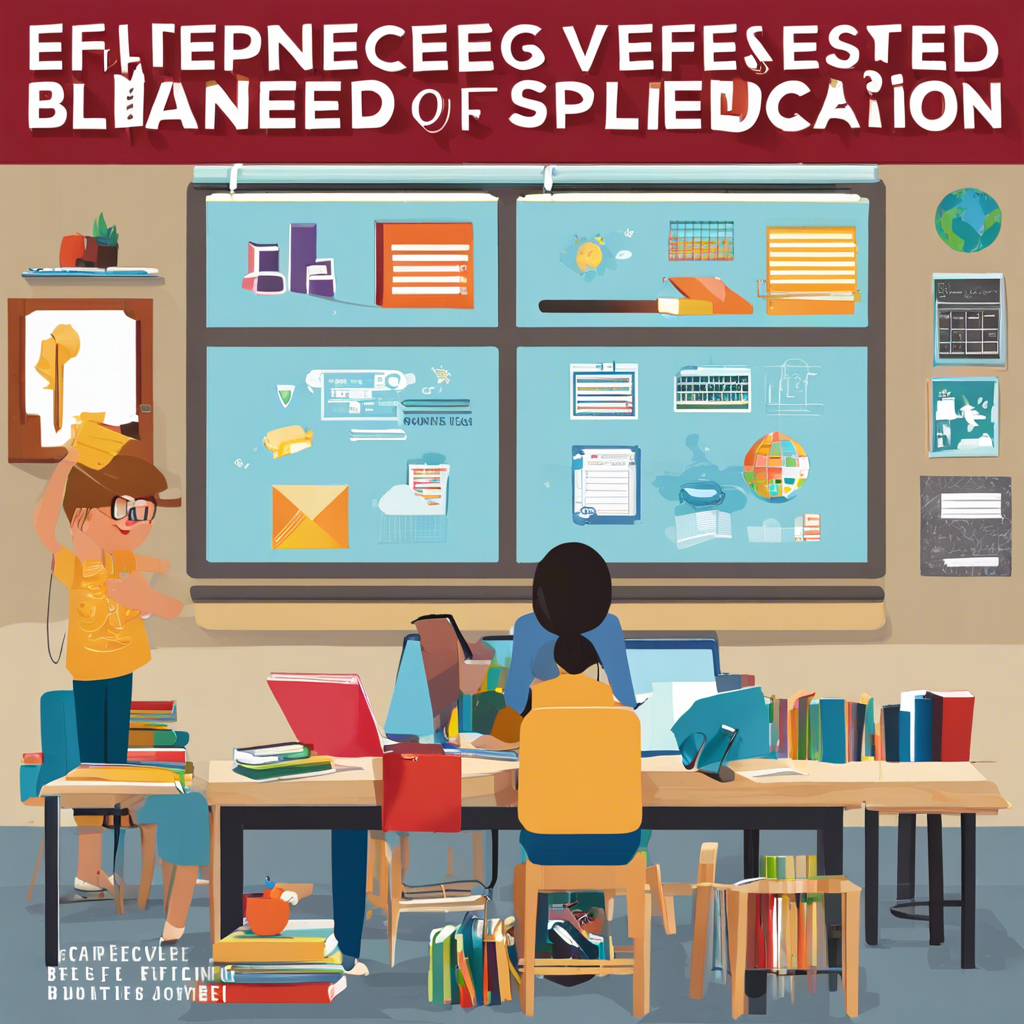Blended learning proves effective in special education, offering flexibility, improved engagement, and personalized instruction. Discover its impact.
In the realm of special education, educators are constantly exploring innovative approaches to enhance learning experiences for students with diverse needs. Among these methods, **blended learning** stands out as a promising strategy, combining traditional face-to-face instruction with online learning. This article delves into the effectiveness of blended learning in special education, highlighting its benefits, challenges, and the potential it holds for transforming how we educate students with special needs.
The integration of technology into education has become increasingly prevalent, and blended learning is at the forefront of this movement. This approach allows for a more dynamic and personalized learning environment, catering to the unique requirements of students in special education. By incorporating online resources, interactive platforms, and digital tools, blended learning offers a flexible and engaging learning experience.
## Effectiveness of Blended Learning in Special Education
### Improved Student Engagement and Motivation
Blended learning has been shown to significantly increase student engagement and motivation in special education settings. The introduction of digital elements and interactive activities can make learning more enjoyable and accessible, especially for students with different learning styles and abilities. For instance, a study conducted by the National Center for Learning Disabilities (NCLD) found that students with learning disabilities who participated in blended learning programs exhibited higher levels of engagement and motivation compared to traditional classroom settings. [^1]
### Flexibility and Personalization
One of the key advantages of blended learning is the flexibility it provides. Students can access learning materials and participate in activities at their own pace, accommodating different learning styles and abilities. This flexibility is particularly beneficial for students with special needs, allowing them to progress in a way that suits their individual learning trajectories.
Personalized Instruction:
Blended learning enables teachers to provide **personalized instruction** tailored to each student’s needs. Online platforms can offer adaptive learning paths, adjusting content and difficulty based on individual performance. This ensures that all students receive the support and challenge they need to progress.
### Enhanced Teacher Support and Collaboration
Blended learning also facilitates enhanced teacher support and collaboration. Teachers can use online tools to monitor student progress, identify areas of difficulty, and provide timely interventions. This real-time data enables educators to make informed decisions and adjust their teaching strategies accordingly. Moreover, blended learning encourages collaboration among teachers, allowing them to share resources, insights, and best practices to improve overall instructional quality.
### Increased Access to Specialized Resources
Specialized Online Tools:
Blended learning provides students with access to a wide range of specialized online tools and resources that cater to their specific needs. These tools can include interactive simulations, adaptive learning software, and assistive technologies designed to support students with various disabilities. Such resources can significantly enhance the learning experience and help students develop essential skills.
## Challenges and Considerations
### Ensuring Equitable Access
While blended learning offers numerous benefits, ensuring equitable access to technology and online resources is crucial. Not all students have the same level of access to technology at home, and schools must address this digital divide to ensure that blended learning is effective for all students. Providing devices, internet access, and technical support can be essential steps towards equity.
### Teacher Training and Support
Implementing blended learning effectively requires teachers to have the necessary skills and support. Professional development programs can help teachers navigate online platforms, integrate technology seamlessly, and maximize the benefits of blended learning. Ongoing support and collaboration among teachers are vital to ensuring the success of this approach.
## FAQs
###
How can blended learning support students with diverse learning needs?
Blended learning allows for personalized instruction, catering to each student’s learning style and pace. By combining online resources, interactive activities, and traditional teaching methods, teachers can create a more inclusive and engaging learning environment. This approach can help students with diverse needs, including those with learning disabilities, ADHD, and autism spectrum disorder, to access and engage with the curriculum more effectively.
###
What are some practical strategies for implementing blended learning in special education classrooms?
Successful implementation of blended learning in special education involves careful planning and a thoughtful combination of online and offline resources. Teachers can start by identifying areas where technology can enhance learning, such as interactive simulations or adaptive learning software. They can then integrate these tools into existing lessons, ensuring that students receive the necessary support and guidance. Regular monitoring and adjustment based on student progress and feedback are essential to refining and improving the blended learning experience.
###
How can schools ensure that blended learning is accessible to all students, regardless of their technology access at home?
Addressing the digital divide is crucial for the success of blended learning. Schools can provide students with devices and internet access, either through lending programs or partnerships with technology providers. Additionally, offering digital literacy training and technical support can empower students and their families to engage with online learning platforms effectively.
## Conclusion
Blended learning has the potential to revolutionize special education by offering a flexible, engaging, and personalized learning experience. Its effectiveness lies in its ability to cater to diverse learning needs, improve student engagement, and provide teachers with valuable data for targeted instruction. However, ensuring equitable access and providing adequate teacher training are essential to fully harness the benefits of blended learning in special education settings.
## External Links and Resources:
1. [National Center for Learning Disabilities (NCLD) Study](https://www.ncld.org/research/blended-learning-improves-student-engagement)
2. [Benefits of Blended Learning in Special Education](https://www.edutopia.org/article/benefits-blended-learning-special-education)
3. [Digital Tools for Special Education](https://www.techlearning.com/resources/18-digital-tools-for-special-education)
